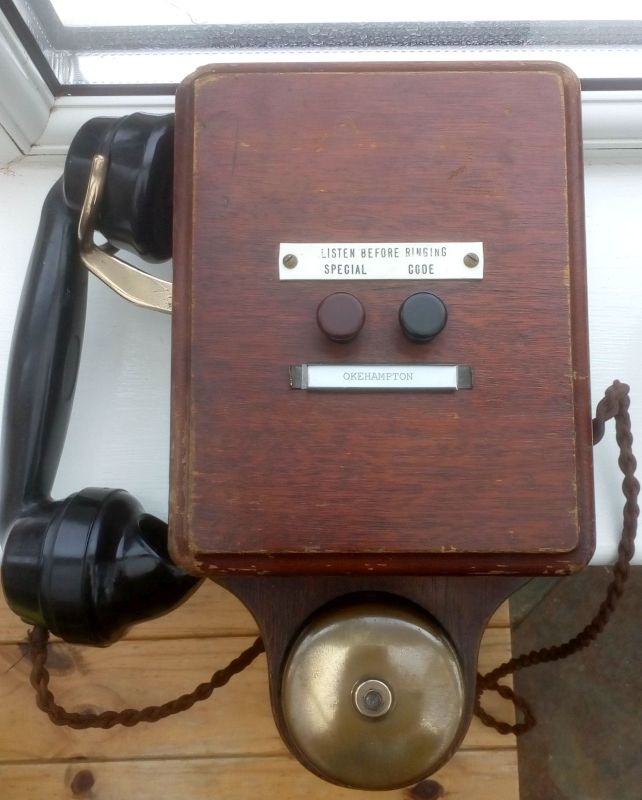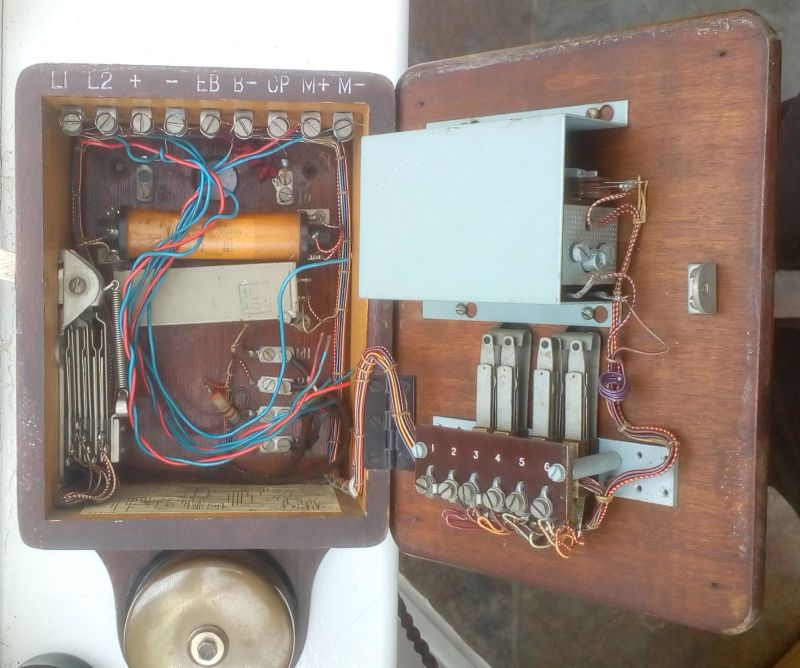Signalbox telephone
 Photographer: Jon Kelsey |
 Photographer: Jon Kelsey |
The former Okehampton signalbox telephone, used for communicating with other signalboxes. It was made by Ericsson, part number N1182C4, SR diagram number E509-44. We’re not sure of its age – anything from the late 1940s to the early 1960s.
One of Exeter and Teign Valley Railway proprietor Colin Burges’s numerous contributions to the Cornwall Railway Society website was on the subject of these telephones:
"On such simple circuits, all the phones were connected and all the bells rang, so it was up to the station to listen for the code, which was in practice quite instinctive. Others would pick up just to hear what was going on, often joining in and doing what today would be called 'teleconferencing'.
The instruction was 'Listen before Ringing' because if the ringer were pressed while someone was talking, he would be interrupted by a screech. I remember the old boys bellowing down the receiver: 'Anyone on?!'
The sets could be the familiar wooden-cased type seen on the walls of signal boxes, made by Ericsson, or more modern plastic desktop models with buttons instead of a dial. Long distance sets had relays so that the battery at one end triggered the bell at the other. In the simple box-to-box variety, the battery at one end powered the bell at the other.
It was a phone like this that the signalman in Night Mail used, when he spoke close into the transmitter: 'That you, Harry? You’ll have to shunt the local – I’ve got the postal on'.
When I worked on the St. David’s exchange, the insulation was so bad on the circuit to Barnstaple that when it rained and the line was crackling the best that could be done was getting Eggesford to pass on a message, which may have resulted in a woman who’d lost her shopping bag having a seat reserved.
As had been done from the beginning on the telegraph or block, the 11.0 a.m. time signal was sent to all points using a piece of wood to give 8-5-5 on a row of bus circuit buttons.
[Colin’s article includes an image of the ‘directory’ of telephones between Plymouth and Truro, showing the unique ring code assigned to each. It was framed and mounted on the wall by the telephone]. By my reckoning, only six out of 22 locations on this Cornish circuit remain.“
Back to Collection page

 Home
Home